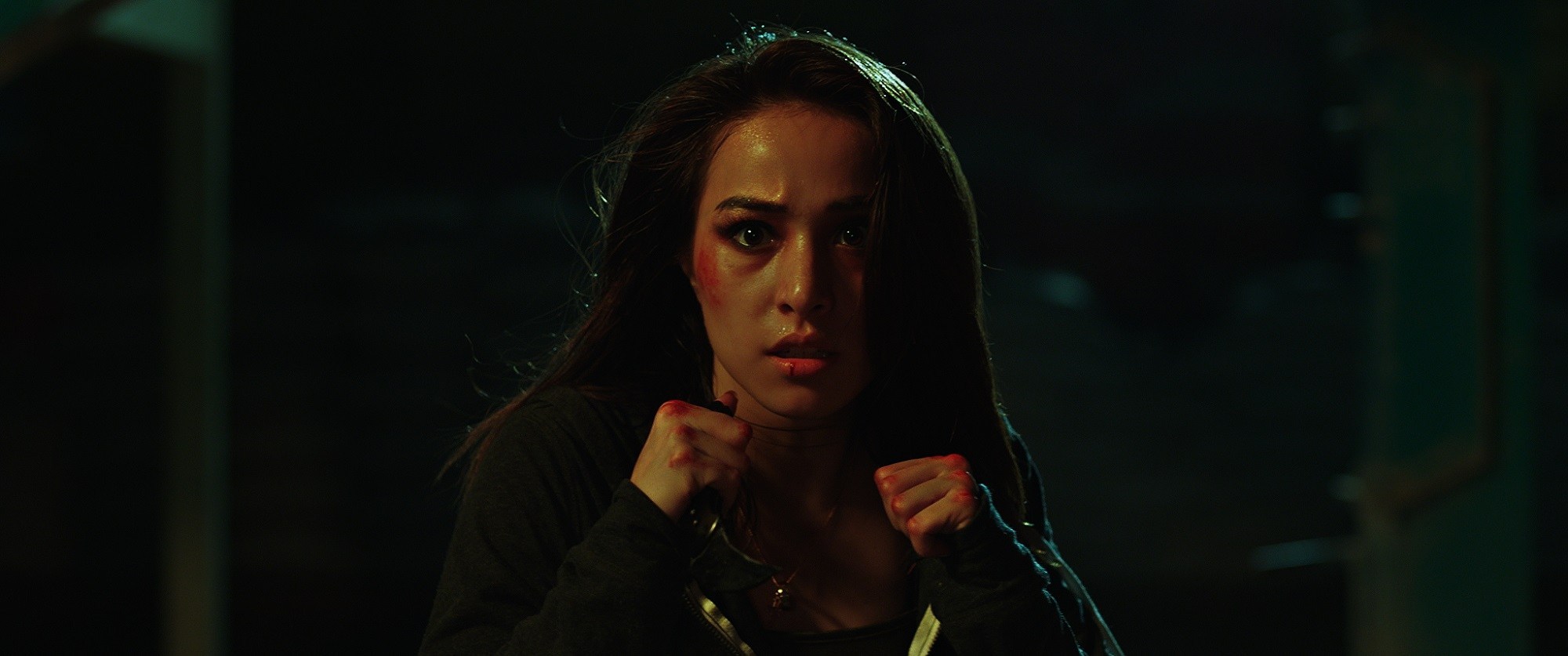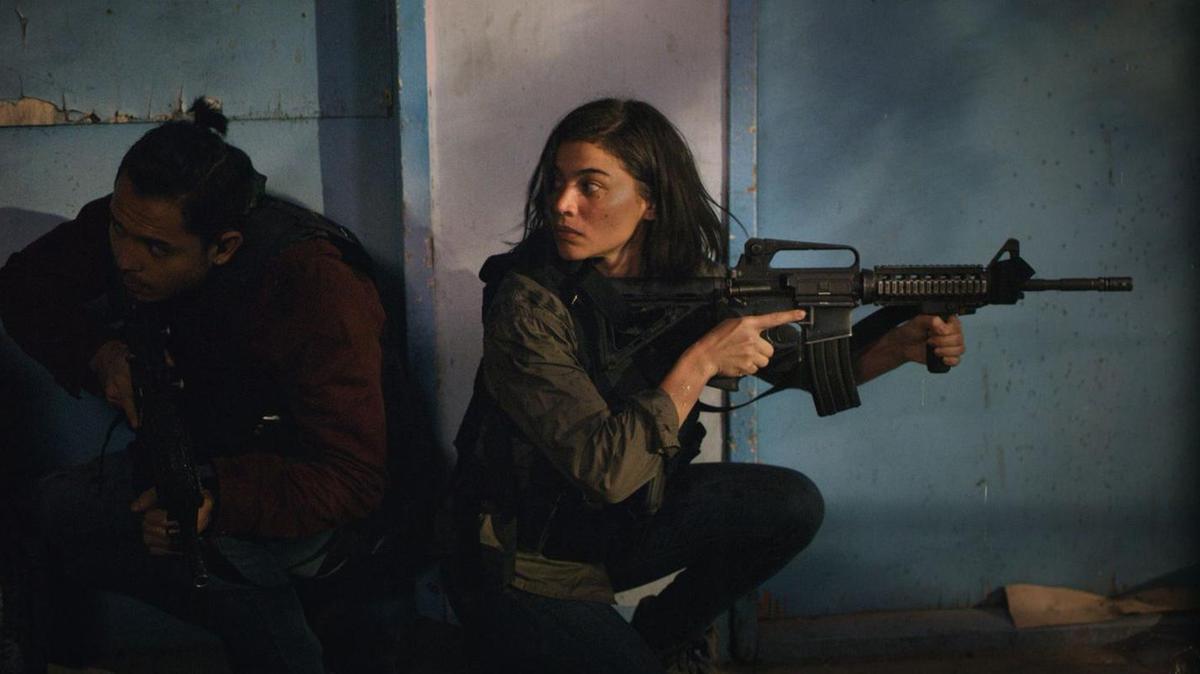To refer to action films as ‘violent ballet’ is to flirt with cliché — but there’s a kernel of truth there. Not for nothing is John Woo a fan of classical Hollywood musicals; John McTiernan has spoken frequently of his desire to make his editing rhythms more “musical”; and Jackie Chan and his ilk are trained performers, like dancers, not actually martial artists. What is an action scene but choreographed, articulated movement, working in tandem with the camera? The camera becomes a partner.
Three recent films, all currently streaming on Netflix, give us an interesting comparison point for the current state of low budget action cinema. Two of them are Filipino and branded as “Netflix originals”; they share a fight/stunt coordinator. The third film is a straight-to-VOD version of The Expendables. Here we see in precise detail what happens when an essential element of the action equation – the performers, or the camera – is out of whack. Because there is absolutely a sense that these two Filipino flicks feel like an affectation, a pose, a copy of a copy: the moves are there but not the grace, not the interplay between the physical human body and the motion picture camera. The other movie is an utter delight, despite clear deficiencies in plotting and acting ability. Of course, the irony of most great action films is that for all of their violence – fists, feet, kicks, punches, guns, bullets, knives, the rending of flesh – they are ultimately acts of unity, an achievement in equilibrium and symmetry. Blood and guts are merely an accent, a spice — season to your preference.
Pedring Lopez‘s Maria and Eric Matti‘s Buybust both look cheap and flat. That doesn’t necessarily have to be a deal breaker — Isaac Florentine and John Hyams have been making pretty fantastic action films with limited resources and low budgets for years. But cinematographers Pao Orendain (Maria) and Neil Bion (BuyBust) share a similar predilection for generic, neon-highlighted digital cinematography that, without the right skills and resources, easily becomes a muddy visual soup. Lighting aside, of the two, Buybust is better: Tracking an elite police squad as they infiltrate a shanty town looking for a powerful drug lord, until things go awry, and the whole village comes down on the officers as they try try to fight their way out. Matti’s film is clearly indebted to The Raid, in terms of both plot and execution — and it’s a pale imitation. There’s a fairly constant barrage of mostly competently staged action that keeps Buybust watchable, but it also suffers from a failure to modulate its pace. The filmmakers add a lot of superfluous narrative baggage to the beginning and end, and without the complete mastery of The Raid team, Buybust‘s unending fight scenes quickly become monotonous. There is also a distinct lack of charisma among the film’s performers, none of whom really seem like trained fighters or actual thespians. Maria is more obviously bad, an unabashed attempt to mimic the John Wick franchise, as a woman goes on a rampage to avenge her murdered husband and daughter. Lopez has an almost hilarious ability to constantly put the camera in the wrong place. Instead of masking the trickery of the stunt work, Lopez (and Matti as well, though to a lesser degree) picks the absolute worst angle to film a move, making the lack of actual contact plainly visible. There are multiple scenes where you can see a country mile between, say, a fist and a face, even though a loud sound effect is clearly indicating contact.
The irony of most great action films is that for all of their violence – fists, feet, kicks, punches, guns, bullets, knives, the rending of flesh – they are ultimately acts of unity, an achievement in equilibrium and symmetry. Blood and guts are merely an accent, a spice — season to your preference.
Both Maria and Buybust are directed amateurishly — and suffer further from haphazard staging. Performers frequently pause and wait for other performers to hit their mark, or awkwardly move around the set looking for their specific spot to stand. The wide shots are especially bad, as multiple bodies have to be wrangled within the frame simultaneously. The common denominator between these films is choreographer Sonny Sison, but there’s plenty of blame to go around. Objects and shadows and barriers, different means of visual obfuscation, are put between the performer and the camera, the better to mask deficiencies in movement. Maria has a scene that is clearly meant to ape (or homage, if you’re feeling generous) the famous hallway-set, single-take brawl in Oldboy. Hilariously, Lopez places the camera behinds stacks of pallets that at any given moment are blacking out at least half of the frame, leaving the largely theoretical action to play out via sound effects and chopped up movement. It’s like they had the idea for the scene, realized there was no way they could pull it off, and then came up with the worst possible solution for covering it up.
Jesse V. Johnson’s Triple Threat, on the other hand, is the real deal. Continuing an ongoing, fruitful collaboration with Scott Adkins, Johnson has assembled a veritable who’s who of current straight-to-DVD and foreign action stars. Iko Uwais, Tiger Chen and Tony Jaa are the good guys, and Adkins, Michael Jai White, Michael Bisping, and JeeJa Yanin are the bad guys, and while the story is nonsense, the fight scenes deliver. Working with fight coordinator Tim Man (himself a veteran of multiple Scott Adkins projects), Johnson has the good sense to let the camera sit back and take in the action scenes. He’s not using long takes, at least not exactly. There are the long, complicated, unbroken tracking shots that get all the breathless coverage, popularized by Scorcese and De Palma and P.T. Anderson, and then there are the more subtle, tableau-style long takes. The point here is not to draw attention to the camera movement but to allow the scene to speak for itself, emphasizing the human body in motion. Typically, when Johnson rolls without a cut, it’s not a gratuitous style but to capture the full movement of a punch or kick, from beginning to end, to the blow landing, and then cut to the parry. The back-and-forth becomes the point, with editing reserved for maximizing impact. In other words, the performers’ technical virtuosity is highlighted, not the camera’s. Uwais’s and Jaa’s fighting styles lend themselves nicely to quick, rapid movements of knees and elbows that demand a clear sense of space to fully appreciate their speed and precision. They match up nicely against White and Bisping, who are all lumbering bulk and brute force. And Adkins is the jack of all trades, constantly showing why he’s one of the best in the business. He’s got bulk and power, but is also quick and agile. An unstoppable force versus an unmovable mass is almost always a recipe for kung fu fun.
Triple Threat isn’t a perfect film, and with this much talent on hand it perhaps should have been an instant game changer, a new classic of the genre. Despite his obvious talents, Johnson doesn’t do a particularly great job with any scenes not involving fighting or shootouts. The acting is variable throughout, with Adkins and White relishing their heel turns, while Chen and Jaa are forced to speak highly accented, broken English, unfairly masking their natural charisma. JeeJa Yanin, star of the gloriously unhinged Chocolate, is dispatched with far too early, and gets only a quick, cursory hand-to-hand fight, otherwise relegated to firing off guns. But Johnson seems to intuitively understand how to present action in its best form, with due respect for the human body and the cinematic frame. The best action will always mix grace and brutality, the abstract, poetic notion of bodies moving through space and the lizard-brained thrill of people wailing on each other. It’s boxing and wrestling, the sweet science and the showmanship, realism and fakery, the beauty of a Busby Berkeley musical number and the threat of bodily harm. When it all comes together, there’s nothing quite like it in cinema.
Stream Pedring Lopez’s Maria, Eric Matti’s Buybust, and Jesse V. Johnson’s Triple Threat on Netflix.









